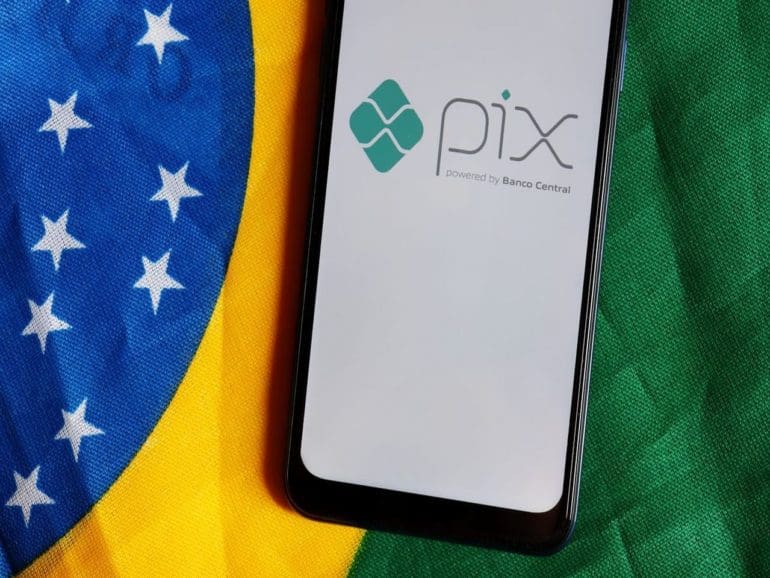Latin America rarely leads the world in technology and digitization. The region faces significant digitization gaps, and a vast population remains underbanked today.
But with Pix, the instant payment system that grew by leaps and bounds in Brazil, the country has set a representative case for financial inclusion. Its resounding success has aroused interest from the international community, receiving praise from institutions such as the Bank of International Settlements, a network of central banks worldwide.
Now the technology, which Brazilians widely adopted, is up for grabs.
This month, the president of the Central Bank of Brazil announced its protocols would be made available to other regulators to replicate. This opens the door for more countries in the region to mirror Brazil’s widely acclaimed digitization initiative.
“We will open everything that we did with Pix to all central banks that want to copy it, for free,” governor Roberto Campos Neto said at an event in Sao Paulo, according to local media.
Pix saw strong adoption
By almost every measure, the evolution of Pix has been astounding. Implemented in 2020, the central bank now processes over half a million transactions per minute through Pix, and a trillion reais per month, roughly $200 billion. With these numbers, Campos Neto argued that other countries could be potentially interested in exploring a similar path.
“I’ve been talking a lot with Colombia’s central banker. He tells me they want to do the same”, he was quoted as saying earlier this year. “I think we can expand Pix initially in Latin America. Canada is also interested because Pix is very cheap. It cost the central bank $5 million reais.”
Due to the ease of sending and receiving money, and also because there are no fees, the adoption of Brazilians was explosive. The system has registered users equivalent to roughly half the Brazilian population (210 million). Pix, now ubiquitous in Brazil’s major cities, is rapidly gaining market share in the country’s universe of digital payments.
“Brazil is opening one of the most successful cases of real-time payments to the world,” Bruno Diniz, a fintech adviser in Brazil, said. “It is great to see the disruptive way the Brazilian regulator is driving the innovations that will transform the business environment in years to come.”
Pix as part of a broader agenda
The regulator launched Pix roughly two years ago as part of a broader agenda to drive inclusion in Brazil. The bank sought to foster competition in the sector and reduce the cost of banking services.
“More cases like the Colombian one should follow,” Ignacio Carballo, Crypto & Alternative Finance lead at Americas Market Intelligence, told Fintech Nexus. “Now that they have opened up the code, any developer can replicate it if they want to.”

However, replicating the swift success of Pix is not necessarily a walk in the park for other regulators. There have been other instant payment initiatives in Latin America that have not gained as much traction, and the timing of the Pix initiative – in the middle of the pandemic – was also a decisive factor, as Brazilians were actively looking for alternative ways to make payments.
According to the central bank data, Pix is operated by more than 770 institutions in Brazil. And the regulator has made it mandatory for banks to participate, leaving little room for maneuvering for incumbents.
Other less successful experiences in LatAm
In contrast, regulators elsewhere in Latin America have faced little commitment from traditional players. In this regard, Carballo cites the case of Argentina’s Transferencias 3.0, a similar framework for payments.
“The initial proposition was that payments would be free of charge, but then the (banking) sector rejected that idea and, through negotiations, it ended up having a fee,” Carballo said. “It is a lower fee than other payment mechanisms, but without a doubt, it did not come out as it was planned in the first place.”
Greater financial inclusion
Although still short of developed countries, financial inclusion data for Brazil was already higher than in other countries before the arrival of Pix. According to the expert, this has made consumer acceptance and adoption far easier. In Mexico, CoDi, another instant payment initiative championed by the Banco de Mexico, saw minimal traction among Mexicans, with a handful of traditional banks concentrating the vast majority of transactions.
“The sector is hyper-concentrated, and CoDi was not a success for different reasons,” Carballo said. “But among them is that the use of cash in Mexico is far more extended than in other economies. The demand factor must also be taken into account.”
Related:
- Brazil moves closer to crypto regulation with Senate vote
- Crypto regulation slow to move in Latin America
He argues that immediacy and “free of charge” will become the new normal. Although it is still too early, it could well be the case that citizens in other geographies make a case for those conditions.
CBDCs coming next
Next in Brazil’s central bank agenda is the real digital, a central bank digital currency that could be launched in 2024.
The governor, whose mandate ends by the end of that year, has often underscored the relevance of the technology driving cryptocurrencies and digital assets. Following the collapse of FTX, Campos Neto argued that banks could eventually act as token holders to mitigate the risk of concentration.
“We think it will increase the efficiency of banks when they start to see assets and liabilities in the form of tokens,” he commented. “And this way, you do not get a custody concentration problem.”


